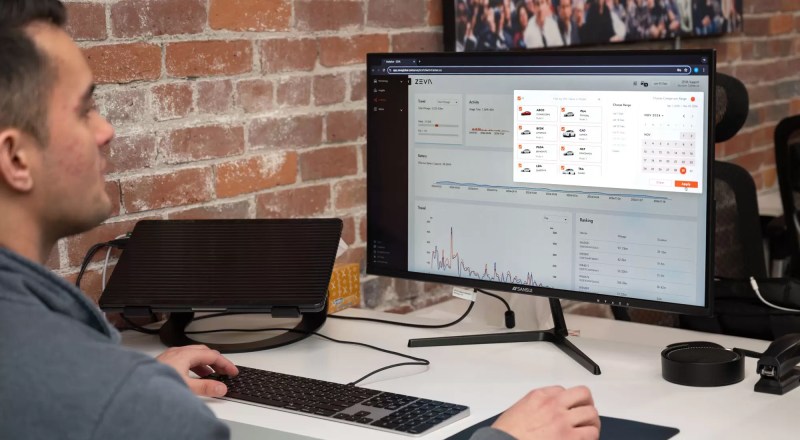The Changing Landscape of Risk
Electric vehicles bring with them a new set of challenges and opportunities. Traditional risk factors such as mechanical breakdowns or fuel-related issues are replaced by concerns like battery health, charging infrastructure, and the potential for battery fires. These elements demand a fresh approach to insurance:
Battery Fires: Unlike internal combustion engines, EV batteries can pose significant risks when damaged, as they can burn intensely and are harder to extinguish. This aspect has led insurers to reassess coverage models to account for such incidents.
Unique Repair Needs: EVs often require specialized technicians who understand high-voltage systems, leading to potentially longer repair times and higher costs due to the need for OEM parts or even battery replacement.
Evolving Insurance Models
As the risks associated with EVs differ, so too must the insurance models. Here’s how:
Usage-Based Insurance (UBI): This model uses telematics to monitor how, when, and where a vehicle is driven. For fleets, this translates into premiums that reflect actual usage rather than broad estimates, potentially lowering costs for operators who manage their fleets efficiently.
Fleet-Specific Coverage: Recognizing that each fleet’s needs are distinct, insurers now offer policies that consider the unique operational patterns, geographic coverage, and vehicle types within a fleet. This customization helps in managing both risk and cost more effectively.
The Psychology Behind Driver Behavior Scores

Understanding human behavior is at the heart of effective risk management. Driver behavior scores, a functionality akin to what ZEVA provides, are not just about monitoring; they’re about influencing behavior:
Feedback Loop: By providing drivers with real-time feedback on their driving habits, these scores can nudge them towards safer, more efficient driving. This isn’t just about cost; it’s about safety, longevity of the vehicle, and reducing the carbon footprint.
Motivation and Rewards: The psychological principle of reinforcement plays here. Better scores can lead to lower insurance premiums or recognition within the company, motivating drivers to maintain or improve their driving behavior.
Transparency and Trust: Knowing they are being monitored can, paradoxically, build trust between management and drivers. It’s about creating a culture where drivers are part of the solution, not just the subject of scrutiny.
The Power of Replay: Enhancing Understanding and Performance

An often overlooked but pivotal feature in modern fleet management is the ability to replay trips. This functionality allows for a detailed review from start to finish, capturing historical speed data and the state of the battery throughout each journey:
Incident Analysis: Post-incident, managers can replay the trip to understand what happened, providing clarity on whether a battery issue or a driver’s decision led to the event. This isn’t just for fault-finding; it’s for learning and enhancing safety protocols.
Performance Tuning: By analyzing how speed and battery usage correlate over specific routes, managers can optimize driving patterns for efficiency, ensuring batteries are not drained unnecessarily or charged inappropriately.
Training Tool: New drivers or those transitioning to EV fleets can benefit from watching replays of exemplary drives, understanding optimal charging times, and learning how different speeds affect battery life in real-world scenarios.
Exporting Data for Insurance Leverage

Taking this data management a step further, the ability to export this detailed trip data, including behavior scores, serves as a powerful tool:
Insurance Negotiation: With concrete data on driving behavior, fleet operators can demonstrate to insurance companies that their drivers are among the safest on the road. This can be particularly persuasive when negotiating premiums or seeking discounts.
Proof of Safe Driving: By exporting comprehensive data sets that include speed, battery usage, and behavior scores, operators can provide insurers with evidence of a well-managed, low-risk fleet. This not only aids in securing favorable insurance terms but also in establishing a reputation for safety and efficiency.
Customized Coverage: Insurers can use this data to tailor policies more accurately to the specific risk profile of each fleet, potentially leading to more competitive pricing and coverage options that align closely with actual fleet operations.
Real-Time Monitoring: A Game Changer

Real-time data collection isn’t just a technological advancement; it’s a narrative tool in the story of fleet management:
Proactive Management: Real-time insights allow for immediate action, whether it’s addressing a vehicle’s charging needs or responding to a driver’s behavior pattern that might lead to risk.
Data-Driven Decisions: This approach transforms fleet management from reactive to predictive, where decisions are based on current, accurate data rather than historical trends or assumptions.
Crafting the Story of Efficiency and Safety
In this narrative, fleet operators are not just managing vehicles; they are storytellers of a journey towards sustainability, efficiency, and safety. The tools and insights provided by systems similar to ZEVA’s, including the ability to replay trips, are the pen and ink, ensuring each chapter of this story is written with foresight and precision:
Educational Journey: Operators who embrace these technologies are not just adopting tools; they’re learning about their fleet in ways previously unimaginable, which can be shared in safety meetings or policy updates.
Cultural Shift: As fleets adapt, there’s a cultural move towards data-informed decision-making, where every drive becomes a lesson, every charge a narrative point, and every decision is shaped by the insights at our fingertips.
In conclusion, as we navigate this new frontier of electric fleets, understanding and leveraging the evolving landscape of insurance and risk management, coupled with tools like trip replay, is not just smart business; it’s a compelling story of innovation and responsibility. The future of fleet management is being written now, with each drive, each charge, and each decision shaped by the insights and data at our fingertips.ertips.
